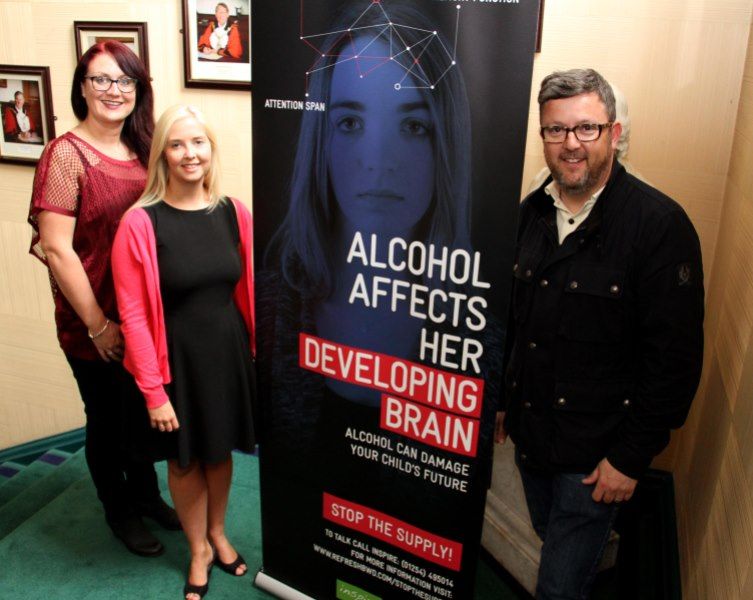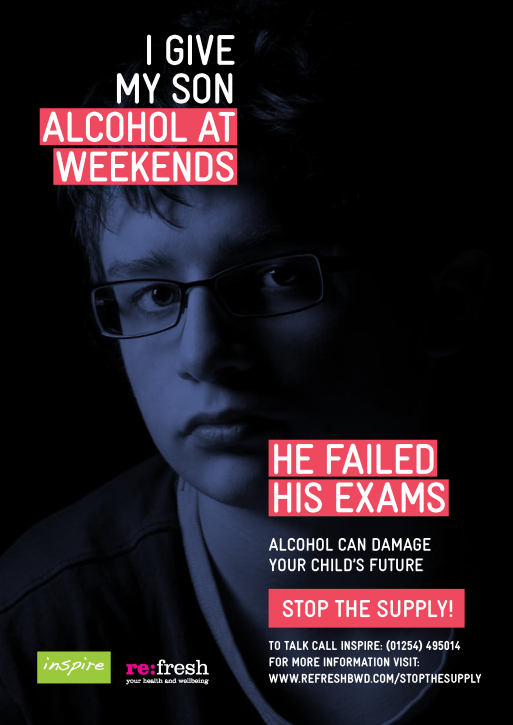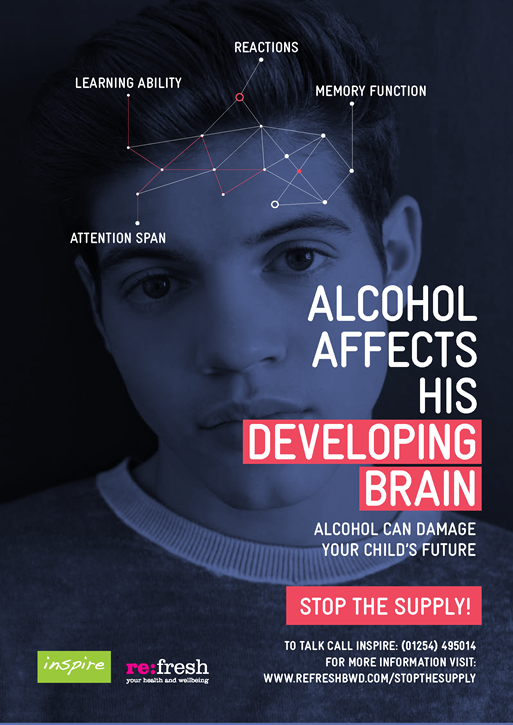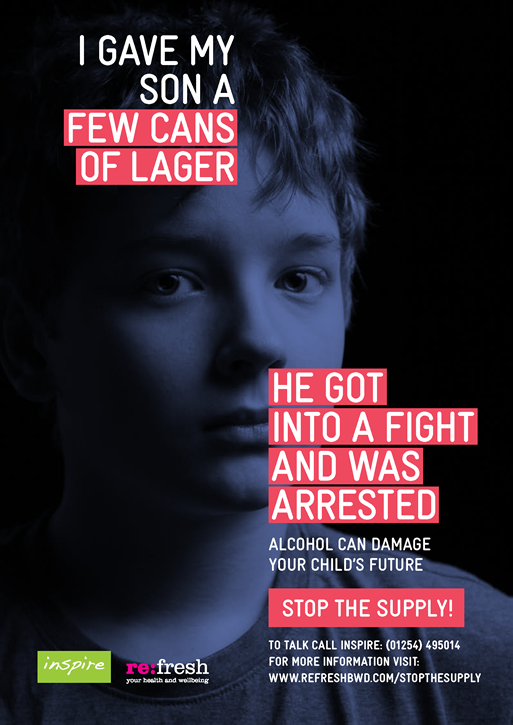
Jackie McVan from CRI, Clare Jackson from Blackburn with Darwen Public Health and Mark Murray from TPW launch the ‘Stop the Supply’ campaign
Published Monday 27 July 2015 at 8:00
A new campaign has been produced to highlight the dangers of parents giving alcohol to their young teenage children.
The online digital and printed poster campaign urges parents to ‘Stop the Supply’ of alcohol to children aged 13-16, highlighting various ways in which it can damage a young person’s future.
In designing Stop The Supply, parents from across Blackburn with Darwen were spoken to, to gauge their awareness of and attitudes towards giving alcohol to their children at a young age.
These conversations helped to inform the campaign’s visuals and typical circumstances when alcohol might be given by parents to their children.
The campaign was produced by Blackburn with Darwen Council working in partnership with local substance misuse provider Inspire / GO2 and local design agency TPW.
It is a follow up to 2014’s ‘Totally Wasted’ campaign – a short film produced to highlight how, if you’re young, alcohol can ruin more than just your profile – it can mess with your life. View the film here.
Both campaigns aim to prevent alcohol related harm within the local community and ensure the safety and well-being of young people.
To talk about any issues relating to the campaign call Inspire on (01254) 495014, visit www.cri.org.uk/blackburn-darwen or search Facebook for: ‘Inspire Blackburn with Darwen’
Councillor Mustafa Desai, Executive Member for Health and Adult Social Care, said:
“We wanted to put together a campaign that would be influenced by and aimed at parents of 13-16 year olds to let them see that, if they are enabling their children to drink alcohol too early in life, it can really impact on their future. This can be in ways they might not have even realised, such as alcohol’s impact on a developing brain.”
Mark Murray, from TPW, said:
“‘Stop the Supply’ is the overall message to parents because, from our initial research, we found that’s how a lot of teenagers get alcohol. We showed parents a selection of concepts and found the visuals with the stronger messages were the most effective. They also liked our brain development concepts as this shocked them by communicating the damaging effects that alcohol can have on a teenage brain.”
Filed under : alcohol | alcohol concern | Councillor | Mustafa Desai | stop the supply






